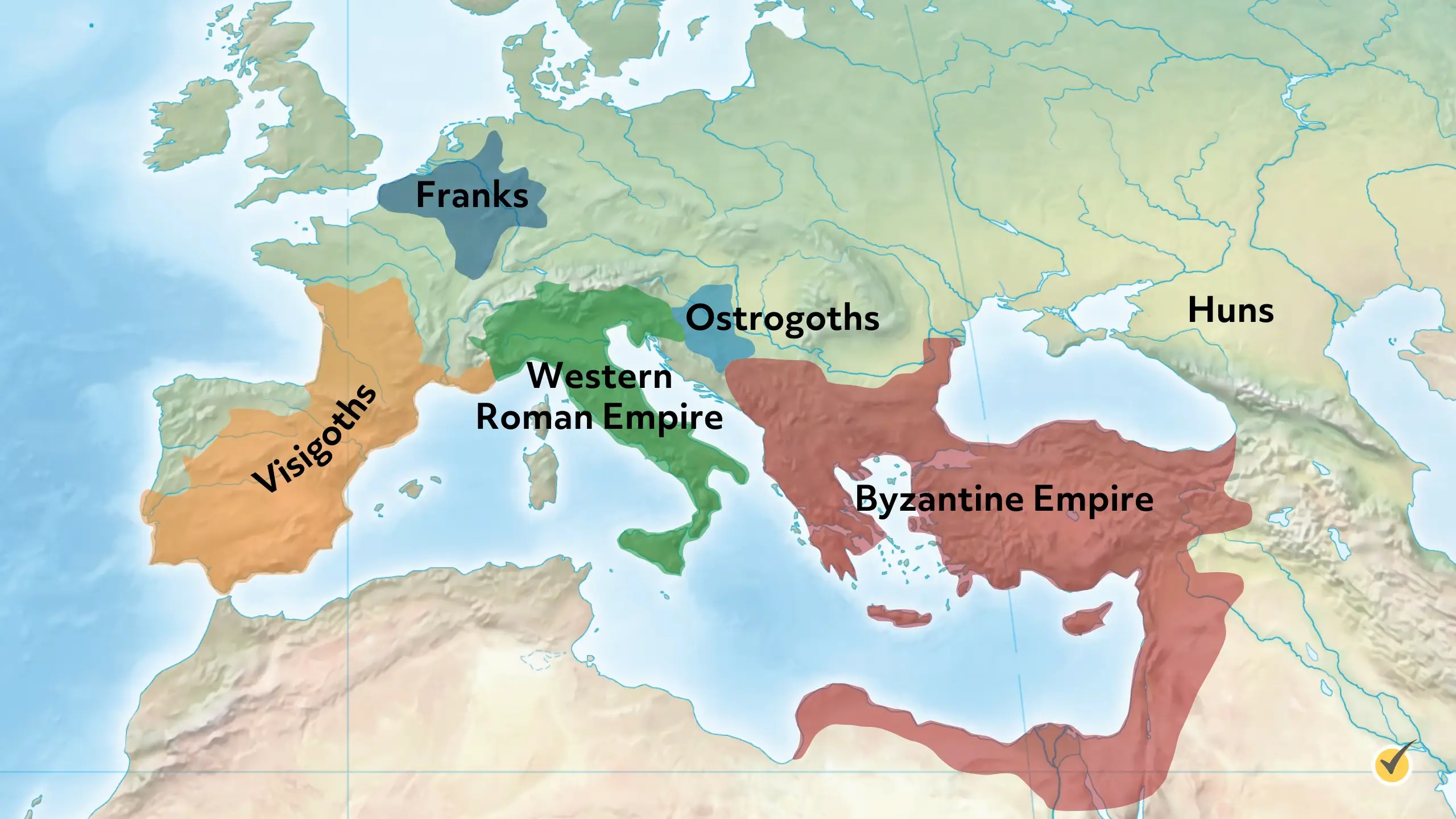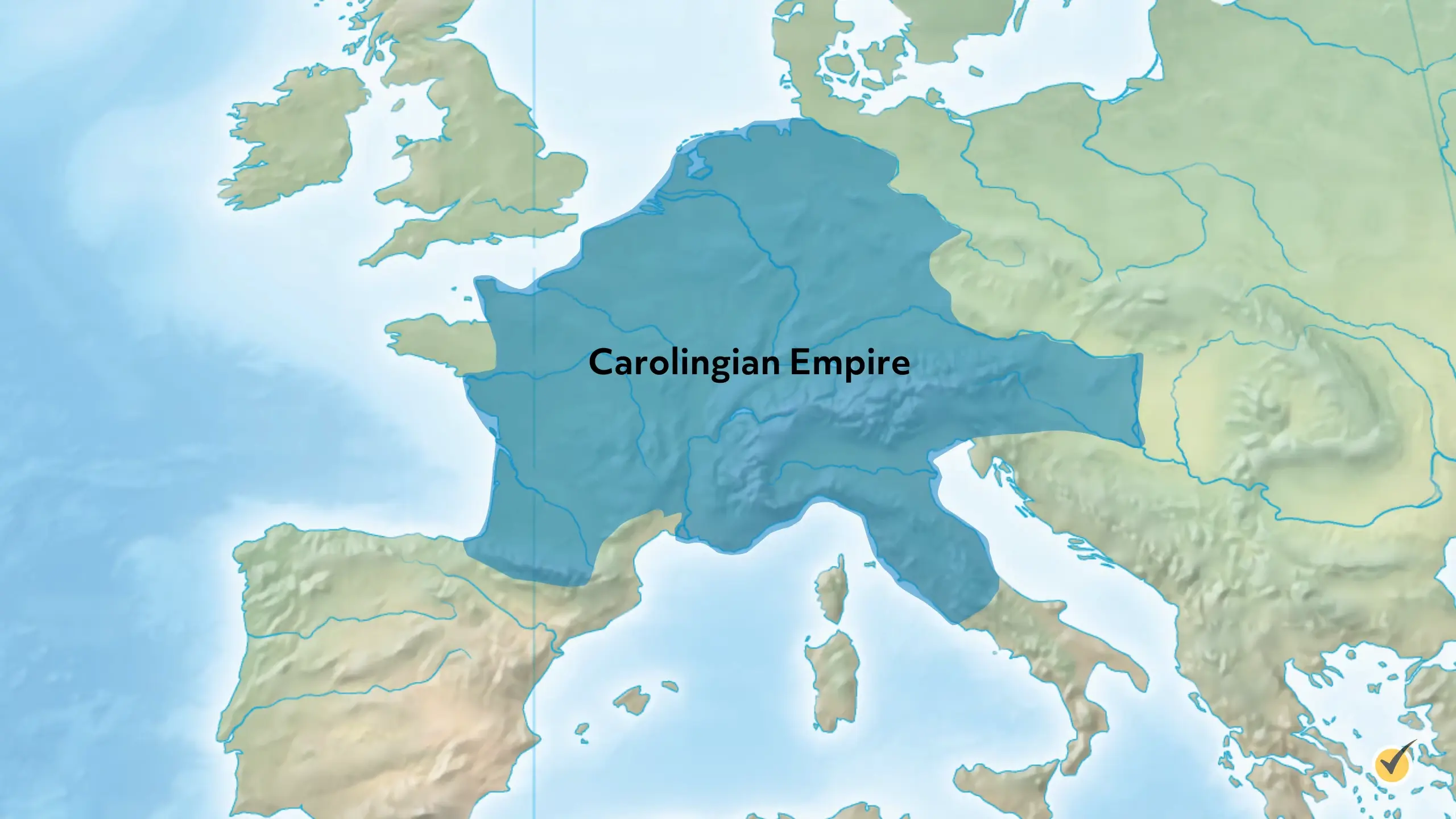
Hi, and welcome to this overview of the Middle Ages!
The Dawn of the Middle Ages
The Middle Ages formally began with the collapse of unified Roman imperial authority in Western Europe in 476. Though the Roman Senate officially transferred that authority to the Eastern Roman Empire in Constantinople, which became known as the Byzantine Empire, Europeans in the previous Western Roman Empire no longer had Roman emperors ruling over them. Foreign invasions – from the Goths, Huns, and Franks, among other groups – had resulted in large-scale plunder and ravaging of lands.

The disintegration of Roman authority in Western Europe, however, was by no means a total loss to citizens. In fact, there were certain benefits. No longer did a universal monarch hold sway over much of the continent, with an army, civil service, and road system powerful enough to impose and collect heavy taxes. With violent decentralization of power came opportunity for individual freedom of maneuver, as many local rulers no longer had the territorial reach nor the wealth to employ armies of mercenaries and enslave the local population.
Structure and Conduct
Large-scale tyranny was receding, and in its place was an array of independent principalities. Peasants, or serfs, gave portions of crops they grew to their lords in exchange for being allowed to reside on small parcels of land and keep portions of their crops for themselves. In return, they were required to serve in the lord’s army in wartime, among other obligations. This reciprocal system of obligations was known as feudalism. Often serfs would owe their direct military obligation to lesser nobles including knights, who were professional cavalry soldiers who owned lands under the dominion of a higher-level lord such as a duke. The knights in turn owed military service to these lords. Feudalism was in wide usage throughout Western Europe mainly from the 9th to the 15th century, in which heavily-armed castles and manors figured prominently.
The code of chivalry grew out of feudalism, primarily to curb the massive amounts of violence that were unleashed in a system with a plethora of principalities, many of them roughly equal in strength and deploying armies of knights to invade each other’s territory. This restraint on knightly conduct was instituted mainly to prevent nobles from being genuinely threatened any time their lands were invaded by enemy knights. Practically, the nobles sought to hone the military power of their battalions through chivalry: common emphasized values in the chivalric code were bravery on the field of battle and loyalty.
Charlemagne and the Carolingian Empire
Amid the feudal warfare, certain nobles with advisors emerged into leading positions, grabbing more territory than others and eventually generating the means to found kingdoms. In the case of Charlemagne, who reigned from 768 to 814, the Franks under his command even conquered an empire of sorts – though a much-truncated version when contrasted with the ancient Roman Empire. But Charlemagne’s territory would stretch from northern Spain through France and into Italy, Austria, Hungary, Belgium, and Germany.

In seeking to revive the idea of the Roman Empire through his own conquests, Charlemagne was short of the mark but cultivated many of the negative and positive qualities of some Roman emperors. He had nine wives and in one day had 4,500 Saxons beheaded. Yet he was also a diligent lawmaker, overseeing codified legislation for the minute particulars of his empire; and he ardently promoted education, founding schools and bringing scholars to his seat of government.
In the triple partition of imperial territory to Charlemagne’s grandsons, the westernmost region continued under the sway of the Franks, eventually becoming the monarchy of France. In the early tenth century, a group of inhabitants known as the Normans settled in a northwestern part of France and established a subsidiary duchy within the kingdom, owing loyalty to the French monarch. This relatively small duchy became enormously powerful, helping to install Hugh Capet on the French throne in 950.
A literal crowning success came in 1066, when the Norman Duke William crossed into England and defeated Harold II at the Battle of Hastings, taking control of the country in the process. Through the installation of William the Conqueror (as he was thereafter known) on the English throne, and through a combination of marriage and power politics, the Norman rulers of England were eventually able to wrangle control of half of France, thereby creating the Angevin Empire
This development put French royalty in the awkward position of watching a vassal state take control of a foreign country and usurp French authority within France itself. The French quest for revenge helped fuel the Hundred Years’ War, won by France in the mid-15th century, thanks to several factors including diplomatic skill, the inspirational campaigning of Joan of Arc, and the expert deployment of cannons in the French armies.
As Europeans waged deadly warfare, they were gaining tremendous skill in battle – skill that could better be employed to win foreign territories and markets rather than wasting the strength of each other. The Catholic Church recognized this dilemma and used the pretext of Muslim invasion and occupation of the Holy Land to spur Christian Europeans into action.
Pope Urban II led the charge by giving a speech at the Council of Clermont in November 1095, in which he granted divine sanction to Christian military efforts to retake Jerusalem. The resulting European campaigns to re-conquer sacred territories in the Near East became known as the Crusades. The Crusaders initially succeeded and took control of Jerusalem and surrounding lands, which they possessed for almost a century. At the outset nominally fighting on the side of the Byzantines as co-religionists, in 1204 a detachment of Crusaders diverted from their main mission and sacked Constantinople. But as a result of this sacking and subsequent incursions by Turkish troops on Byzantine frontiers, groups of Byzantine scholars emigrated to the West, bringing a trove of preserved ancient works of scholarship with them.
At roughly the same time the French were smashing their way to victory against England using powerful artillery units, the Turks were also employing cannons in their siege of Constantinople. They took the city in 1453, effectively ending the Byzantine Empire. Another wave of emigration of Byzantine scholars to Western Europe got underway.
The commercial and scholarly interactions brought about through the Crusades, Muslim rule of Spain, and the Turkish conquest of the Byzantine Empire eventually formed the basis for the Renaissance, marking the end of the Middle Ages.
I hope this overview was helpful! Thanks for watching, and happy studying!
- “Knights.” 2019. Feudalism: Rights and Responsibilities.
- “Feudalism.” Wikipedia
- “Chivalry Was Established to Keep Thuggish, Medieval Knights in Check.” HISTORY. January 24, 2019
- “Duchy of Normandy.” 2021. Wikipedia
- “Angevin Empire.” 2022. Wikipedia
- “Hundred Years’ War.” Wikipedia
- “Pope Urban II Orders First Crusade.” HISTORY. A&E Television Networks
- “Greek Scholars in the Renaissance.” 2020. Wikipedia
- “Fall of Constantinople.” Wikipedia
- “Greek Scholars in the Renaissance.” 2020. Wikipedia

